Congratulations to our second round of Access to Alaska Native Collections grant recipients! Thank you to our amazing funders—The CIRI Foundation and the Henry Luce Foundation! With their support, we were able to expand the grant program this cycle and award grants to eleven artists and artist groups.
The artists will be visiting their chosen museums through June 2024 and we look forward to hearing how the visits went.
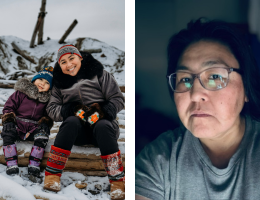
Squirrel Skin Cohort-Marjorie Kunaq Tahbone (Iñupiaq and Kiowa) and Merna Nasek’taq Wharton (Yup'ik) have been awarded a grant to visit the University of Alaska Museum of the North. They are members of a cohort (including Amy Topkok, Michelle Ravenmoon, and Golga Oscar) that is working together over the course of the next year to explore traditions associated with squirrel skin hide tanning and sewing. Studying historical examples of arctic ground squirrel materials will help them understand traditional designs and patterns. The museum has a wonderful collection of squirrel hide materials, including parkas, hats, and dolls that they would like to study. In addition, the University of Alaska Fairbanks has an arctic ground squirrel lab that they would like to visit to learn about the research and to visit the squirrels in the lab. They are visiting Fairbanks during the Festival of Native Arts in February, so they will also have an opportunity to see events at the festival and share about the work that they are doing with others. Grant funds will also be used to pay for a filmmaker, Alex Sallee of Inua Productions, to help record their trip.
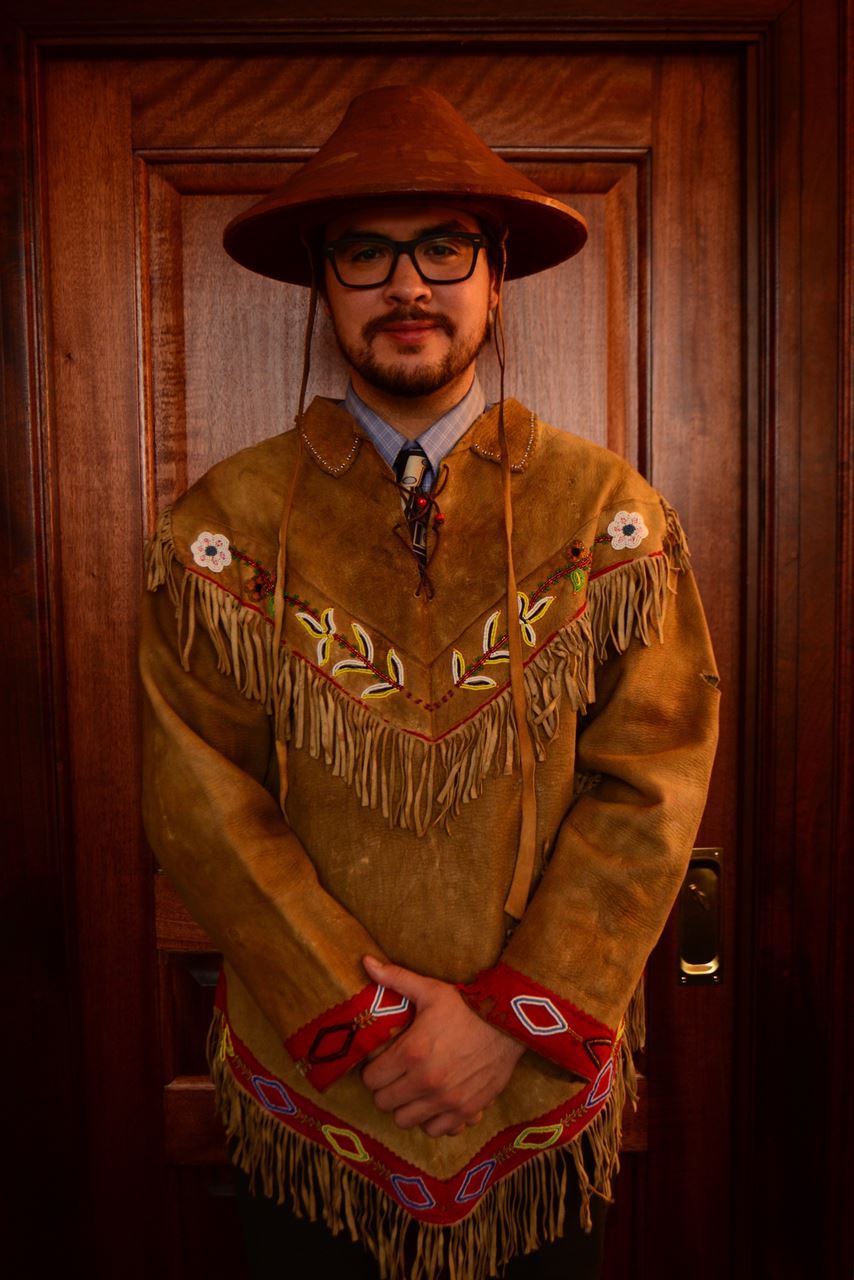
James Hart (Lingít) has been awarded a grant to visit the Anchorage Museum. James is a Lingít artist of the Kiks.ádi clan who works mainly within traditional Formline art. He started his art career in 2014 by completing a paddle carving class with Master Carver Wayne Price, which led James to reconnect with his Lingít culture through canoe journeys with Northtide Canoe Kwan, and practicing song and dance with Elder Paulina Phillips of the Deishú Dancers. He serves as the President of Chilkoot Indian Association and prides himself in helping develop the tribes first Language and Culture department. He plans to visit with bentwood boxes, spoons, bowls, and paddles to learn from the old masters’ pieces and help master his craft. His community has one active master carver left that can carve a totem pole and dugout canoe by himself. Visitations like this gives James the confidence to expand his skills, so that he can serve his home community. Learn more about James and his work at @lingit907 on Instagram.
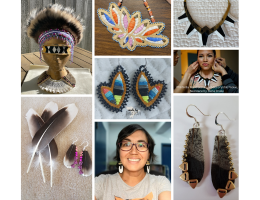
Dena Ayakaq Drake (Yup’ik/Athabascan) has been awarded a grant to visit the Alaska State Museum to study quillwork, fur sewing, and snow goggles. Dena learned the stitches for quillwork through books and videos but has never handled any quillwork in person. Among other pieces, Dena is planning to view an Athabascan wall pocket and a jacket in the collection that has quillwork stitches she’s never seen before, a seal skin hat, seal skin mittens with grass woven lining, and several snow goggles in the collection. Dena's looking forward to seeing and photographing snow goggles from all angles to get a better idea of how to start creating her own. Through this visit, Dena wants to continue to learn and share the art forms that she's exposed to within her community and to also gain more inspiration as she adorns people in a mix of modern and traditional regalia. Learn more about Dena's work at @made_by_dena_drake on Instagram.
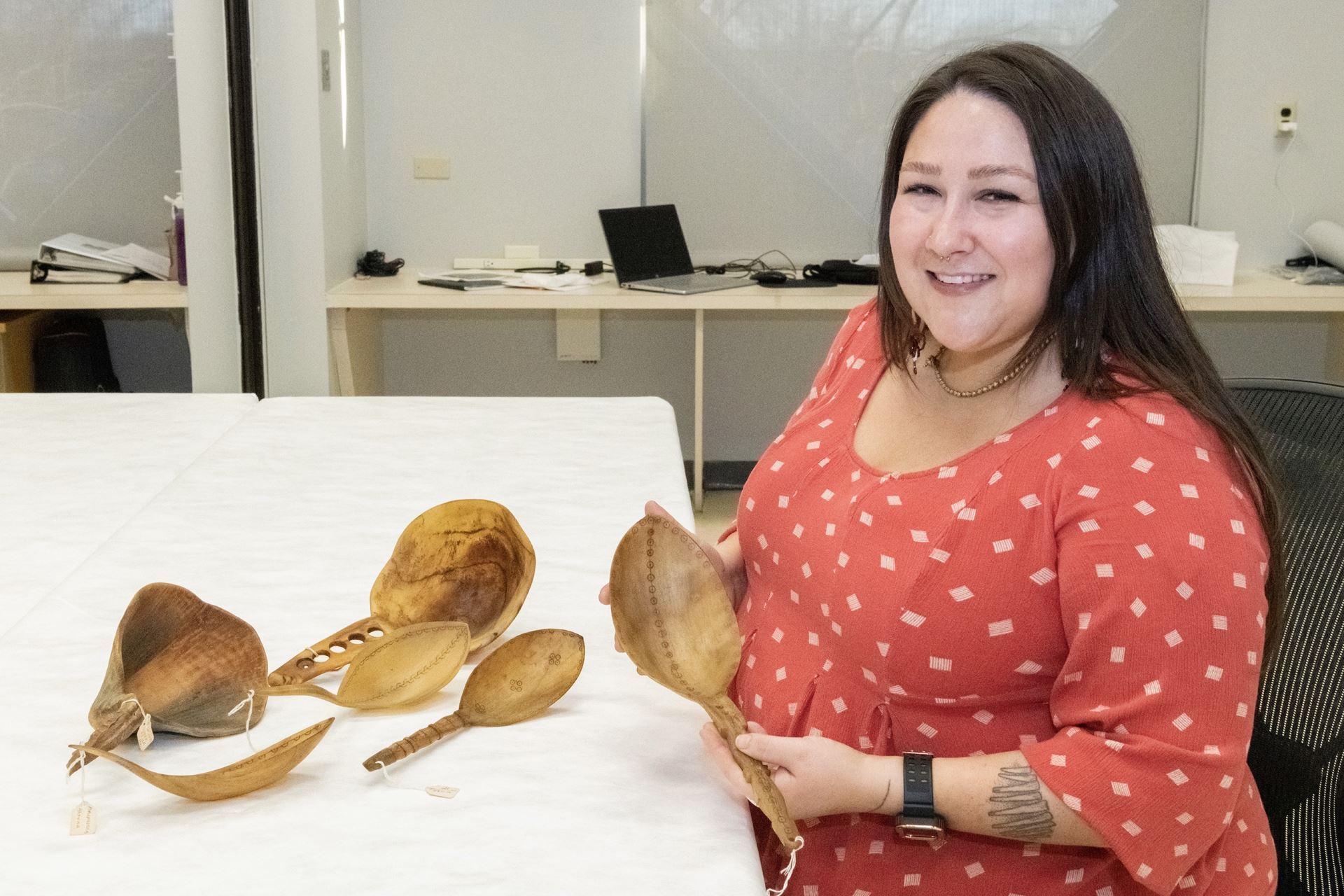
Melissa Shaginoff (Ahtna and Paiute) has been awarded a grant to visit the Alaska State Museumwhere she will visit with Dene footwear and bags, which she has been interested in since visiting the Smithsonian Institution. At the Alaska State Museum, she plans to visit with the old three-piece pattern of tall Dene boots and make sewing patterns by measuring and possibly tracing the separate pieces of the boots. She would also like to visit various Dene bags while in collections to add to her design knowledge as she continues to create firebags for her family and community leaders. When Melissa visits with belongings, she does so with the intent to gather information from institutions to share widely with her family and sistering Ahtna villages. Currently, she runs a community studio in Dgheyey kaq’ (Anchorage, AK), and she would love to teach a workshop based on the bags she visits during this trip. Learn more about Melissa and her work at mshaginoff.comand @mshaginoff on Instagram.
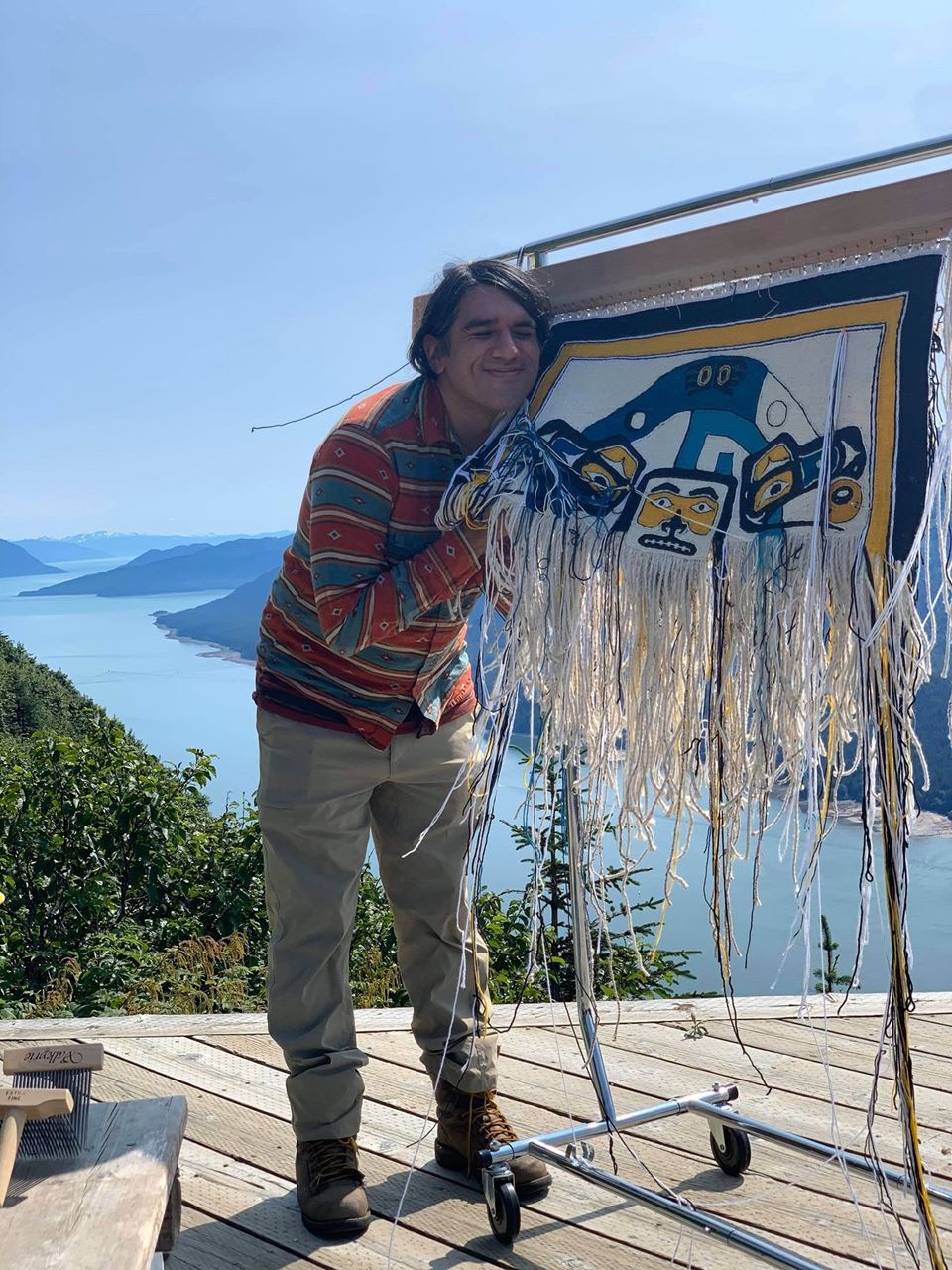
Laine Rinehart (Tlingit/Taos Pueblo) has been awarded a grant to visit the Anchorage Museum. According to Laine, "Weavers often say that it’s the old blankets or robes that are always continuing to teach them: through their warps and wefts they can see how they were constructed and through the spirits of those who wove them, they can better align themselves with the intentionality behind what it means to weave a robe." Laine’s passion has long been in teaching, and through what he learns he is able to pass this knowledge on to fellow weavers, cultural bearers, and students. He has been working in the last several years towards the revitalization of jaanwu (mountain goat) hair. During the museum visit, his intent is to research and analyze older robes in order to gain a better understanding of how warp and weft yarns were created and directly apply such techniques to his own creation of warp and weft yarns.

Sarah Knudson (Gwich’in Athabascan) has been awarded a grant to visit the Alaska State Museumwhere she intends to visit with Athabascan beadwork in the collection to learn about different techniques and the ways in which they have changed over time. She did historical work in college on this topic, and she is interested in exploring this in a tangible way as well. Sarah is also interested in looking at different styles of moccasins – not only Athabascan, but from a lot of different regions – to explore the range of techniques that were used by different artists. She wants to improve her own artistic practice and learn a range of techniques that she can teach people when they are at different levels. She is particularly interested in beginner techniques that she can bring back to her community.

"Kippiq" Martha Marlene Ann Nielsen (Yup’ik)has been awarded a grant to visit the Alaska State Museum to study the fish skin and gut collection. The State Museum has a large collection of fish skin and gut collection items, and gut pieces often use similar stitching to fish skin pieces, so Kippiq feels that both will benefit her continued learning of different methods of working with fish skin. Growing up in an area that subsists on sockeye salmon led to her interest in the lost art of sockeye salmon skin garments. Kippiq has been self taught in fish skin art since 2002. After learning how to preserve the fish skin, she began making earrings and hangers, which led to selling at AFN, meeting the curator at the Anchorage Museum and her first visit to the Anchorage museum. She had learned so much over the years, that she is now teaching others. Every time Kippiq visits a museum, she learns something new—often something easier and more simple to do on the fish skin than what she's taught herself, and she looks forward to learning more.

Alisha Drabek, PhD (Sugpiaq Alutiiq) has been awarded a grant to visit the Anchorage Museum to study three types of collections in order to grow her artist’s practice and honor her Alaska Native heritage: 1) ceremonial hoop rattles, 2) dance fans, and 3) intricate dolls. She has been researching, creating, and teaching about Alutiiq cultural objects, dance, and song for decades. Having access to these Alaska Native collections will directly benefit the development of future work to make dolls, miniatures, and ceremonial rattles and fans. Alisha chose these collections to better understand traditional rattle and dance fan construction, and the art of Alaska Native doll making. Her goal is to make rattles and dance fans both for ceremonial use and within exhibit-worthy doll creations, and to share her photos, notes, creation process, and resulting art with her community. Learn more about Alisha's work on alishadrabek.com.
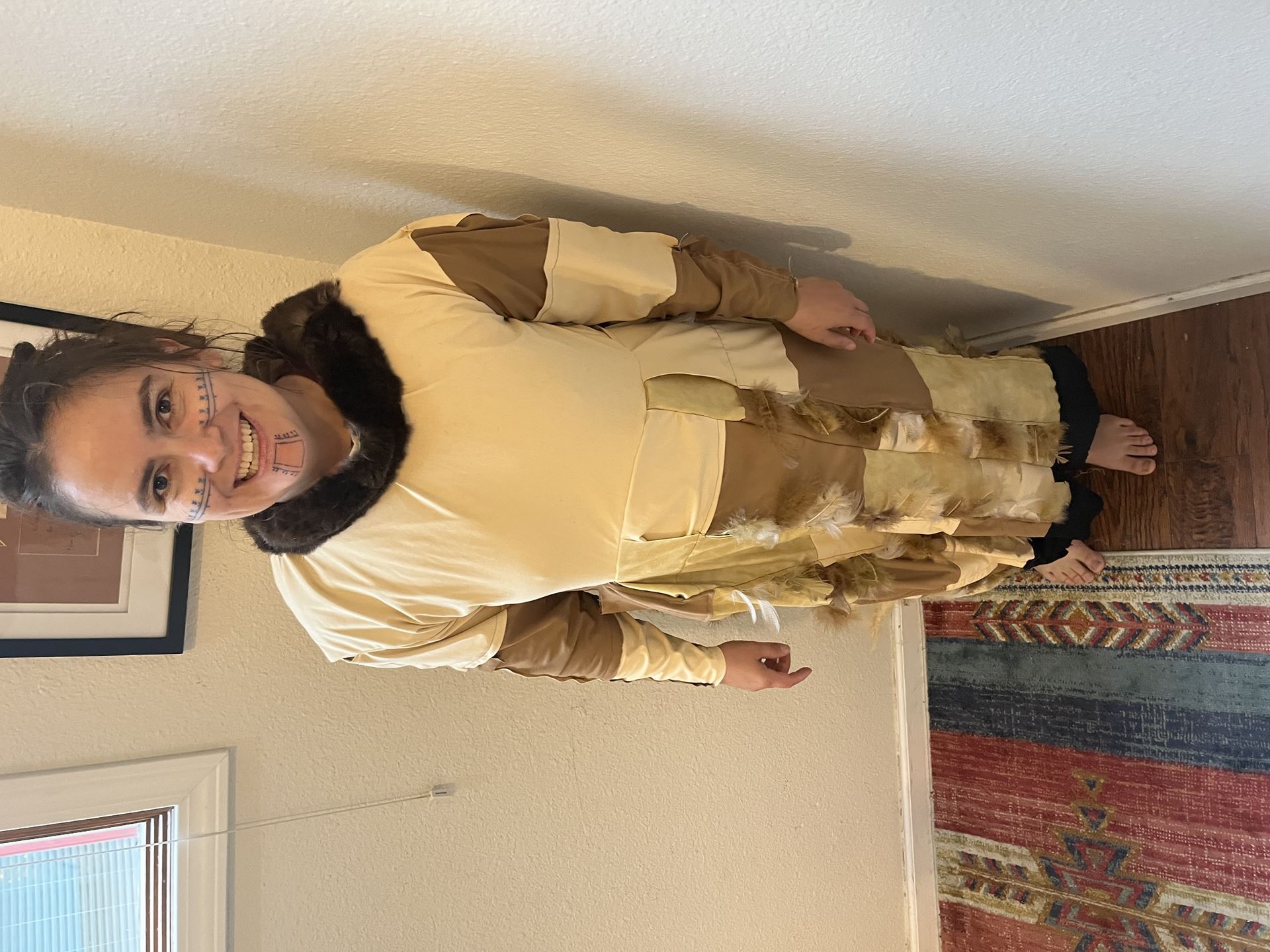
Helena Schmitz (Saskinax̂ and Curyung Tribe)has been awarded a grant to visit the Alaska State Museums. She is revitalizing a lost culture. While she has created fish drums, basket weaving, and iĝayasugaayax̂—a two-person kayak that has not been built since 1910—Helena’s art is not solely on one area within a culture, it is the whole culture, including the language. When Alaska Native peoples’ items are dispersed everywhere, they are unable to learn from them and successfully understand the art and the stories behind the art. Each Saskinax̂ item at a museum is critical in the entire process of revitalization. Helena is hoping to establish a list of Saskinax̂ cultural items from all around the world, and from these visits she hopes to gather more information and inspiration. Helena will be bringing her son with her to visit and learn from their ancestors' work as well. After visiting with Saskinax̂ items in the Juneau museum, she and her son will also travel to the Sitka museum to view the items on display there in preparation for potential future behind-the-scenes visits.
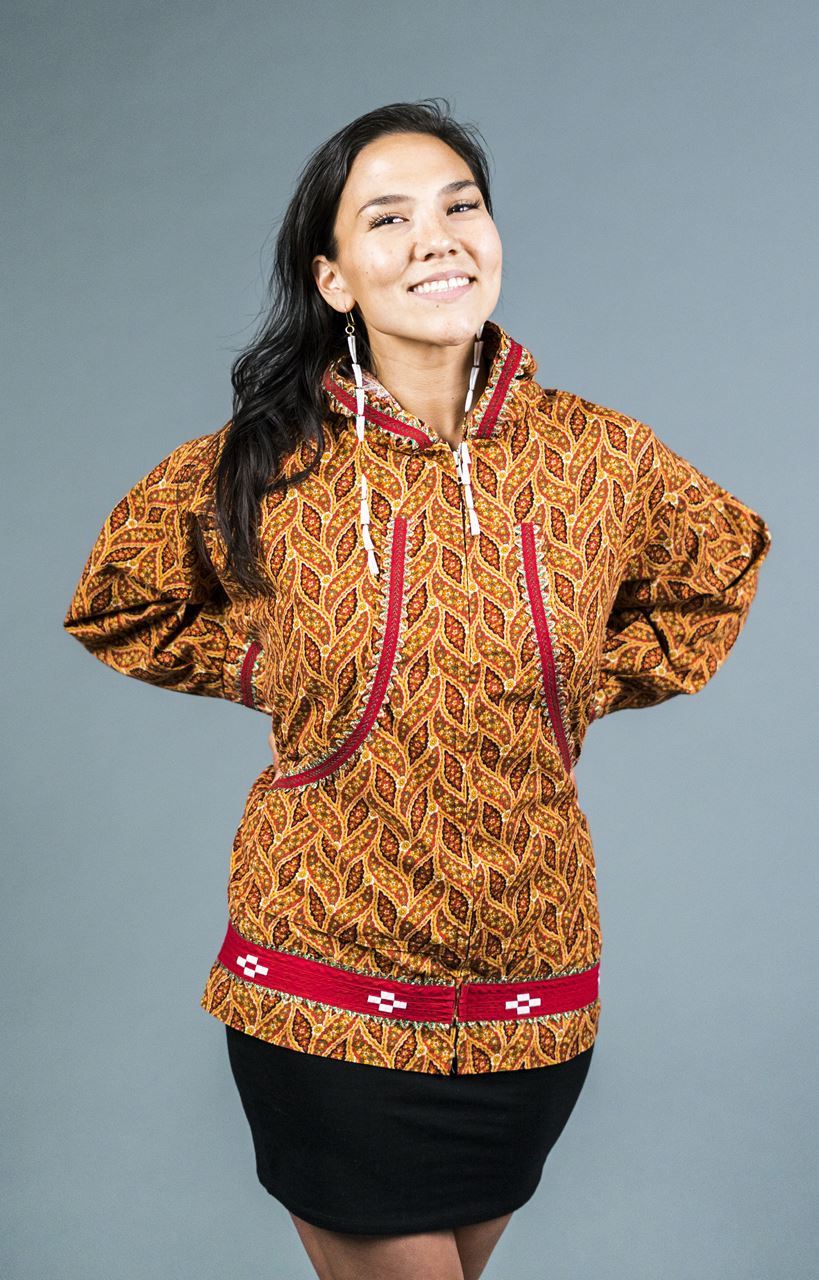
Cassandra Johnson (Inuit) has been awarded a grant to visit the Anchorage Museum where she will be visiting with the fancy Inuit parkas and other forms of protection from the outer elements. Cassandra has been a practicing artist for over 17 years studying at Mt. Edgecumbe, briefly in New York, IAIA, and in Nome, AK. She uses the raw materials and inspiration gathered from her homeland to express her creative self in drawing, painting, sculpture, jewelry and design. Looking and touching garments from the past will help her find the story that they were trying to tell with their work. She feels it is a responsibility to continue this practice to honor her ancestors and create excitement in the present youth. A custom fancy parka isn’t something you can just buy at the store. It’s a collaboration of a family’s identity and stance in the community. This is more than just dressing for the Inuit culture. For Cassandra, it’s correcting any idea that we, as a people, can just go away one stitch at a time. She also hopes to be able to teach others too how to create their own style of fancy parkas. Learn more about Cassandra and her work at @cassandra.tikasuk on Instagram.
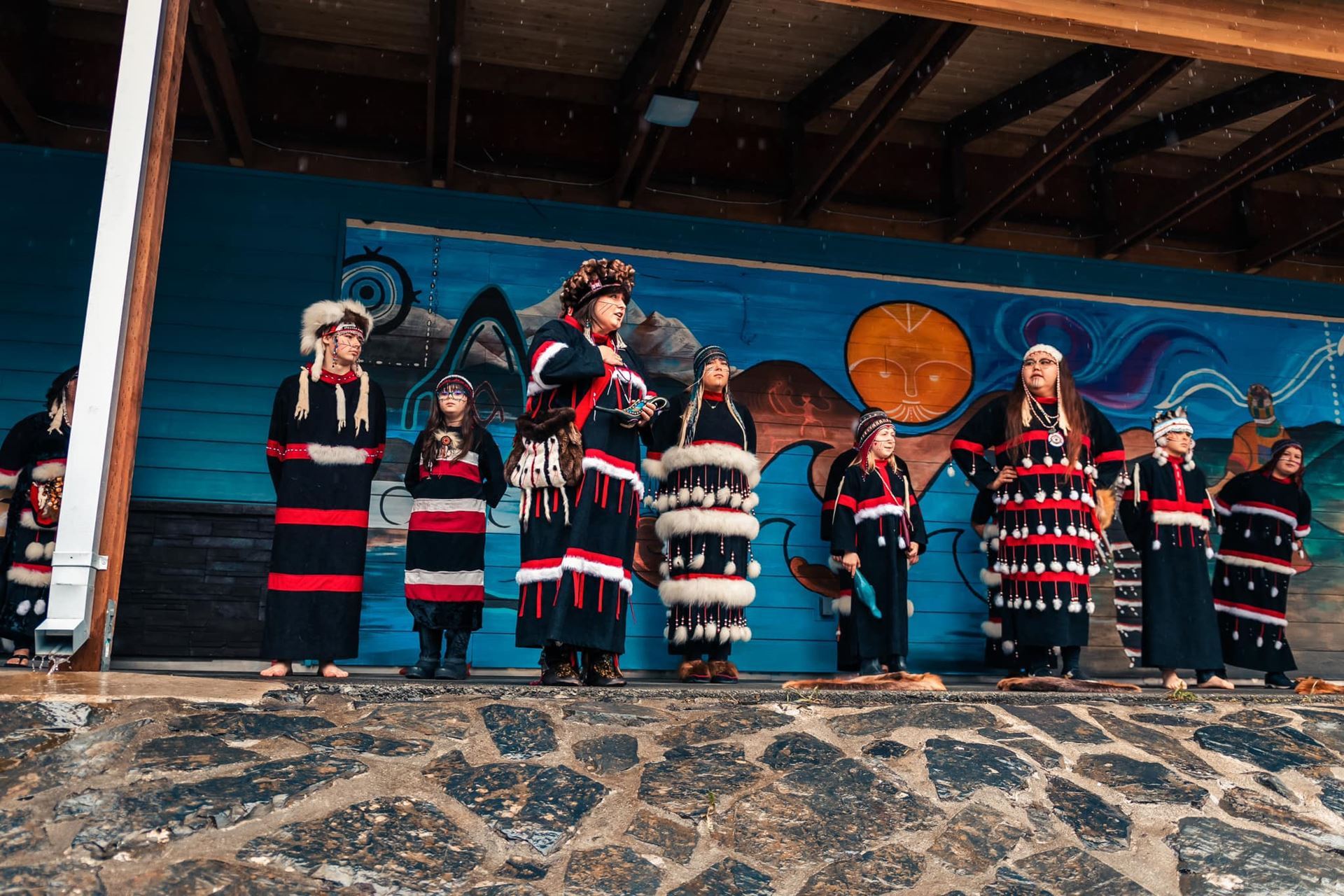
The Kodiak Alutiiq Dancers (Alutiiq/Sugpiaq) have been awarded a grant to visit the Anchorage Museum where they will connect with their Ancestral objects related to dance and ceremony, including hats, clothing, beaded objects, visors, drums, and rattles. Many of their group members are well-known and experienced artists specializing in cultural arts. Alutiiq/Sugpiaq artists Hanna Sholl, Mariah Stapleton, Cassey Rowland, Bayley Rowland, Janelle Barton, and Candace Branson create and sell artwork and teach classes in their community and online. Group goals include viewing items which were sewn, woven, and carved by their Ancestors, to inspire their own work and educate others of the beauty, skill, and commitment it takes to create as their Ancestors did. They are looking to learn from their Ancestors by viewing the intricate details that only an in-person viewing experience allows. There are no Ancestral-sewn clothing objects on Kodiak Island. Members of The Kodiak Alutiiq Dancers will be able to connect with clothing items in the Anchorage Museum that were sewn by their Ancestors, providing them a special opportunity to learn from their Ancestors’ stitches and view the materials up close. Learn more about the Kodiak Alutiiq Dancers on their website or @alutiiqdancers on Facebook. (image credit: Jonathan Samson)
Access to Alaska Native Collections Grant Program
This program responds to the needs of the Alaska Native artists and culture bearers for access to collections in museums by supporting research visits to museum collections storage in Alaska. As such, Alaska Native artists and culture bearers were invited to propose a visit to a participating museum’s collection that has a clear benefit to the development of their work.
The grant program was made possible with funding from The CIRI Foundation’s A Journey to What Matters: Increased Alaska Native Art & Culture (JWM) and the Henry Luce Foundation and was administered by Museums Alaska.
